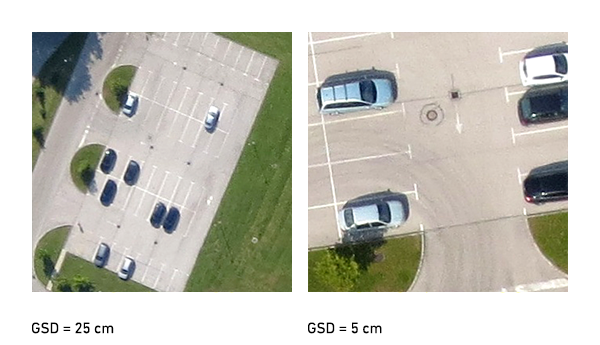Digital aerial photos are composed of a matrix of pixels. Each pixel is actually a small square. GSD (Ground Sample Distance) tells the size of the side of this square (representing one pixel) in natural size on the Earth’s surface. GSD value = 5cm means that each pixel shown on the aerial photo represents a line of 5cm on the ground or covers 25cm2 (5cm x 5cm) in the nature.
Spatial resolution of an aerial photography tells us to what extent the details can be recognized on aerial photography. Details smaller than the size of one pixel cannot be detected; to identify the matrix of at least 4×4 pixels is required. The greater the GSD value, the less visible are the details on the earth’s surface.
The GSD value and spatial resolution aerial photographs are closely related to the altitude of the drone flight. The higher it flies, the less the detail on the Earth’s surface are visible. By increasing the altitude of the flight the GSD value of the aerial photos is thus increasing and the spatial resolution decreases proportionally.
However, it may happen that in spite of flying at a constant altitude not all of the aerial photos obtained have the same GSD. This is due to the elevation of the terrain over which the drone is flying, and the inclination of the camera during shooting. These differences are later eliminated by using advanced processing algorithms. This ensures the orthophoto mosaic made from these aerial photographs to have unified GSD values at all spots.
